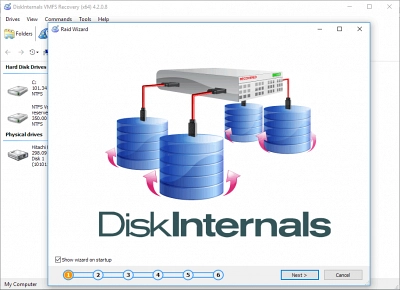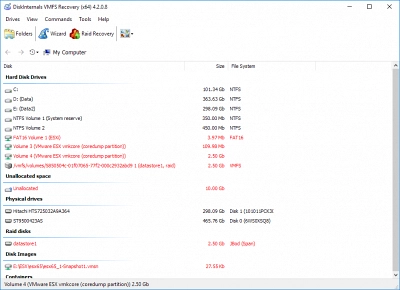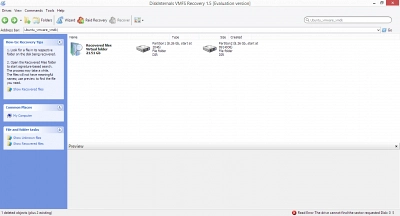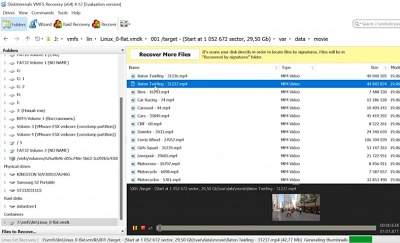VMware Fusion The Specified Virtual Disk Needs Repair
Using VMware Fusion and experiencing the “the specified virtual disk needs repair” error message when you try to access your virtual machines? Well, there are a few ways to get around this situation and regain access to your virtual machine. However, before discussing the different possible ways to fix this error message, it is important that you understand the causes.
VMWare Fusion the Specified Virtual Disk Needs Repair: Symptoms
Virtual disk problems are caused due to power surges, malware attacks, improper shutdowns, and many other scenarios. Some symptoms of “specified virtual disk need repair” include the following:
- The virtual machine fails to start after a forced shutdown or boot up after a crash
- The virtual disk is unable to mount
- You cannot delete snapshots on the server/host
- You get the following error response when starting the VM: Operation on file failed. If the file resides on a remote file system, please make sure your network connection and the server where this disk resides are functioning properly
or
- Cannot open the disk’ path_to_virtual_machine /virtual_disk.vmdk’ or one of the snapshot disks it depends on. Reason: The specified virtual disk needs repair.
How to fix it?
There are a couple of ways to fix this error so you can access and launch your VMs on VMware Fusion.
1. Use VMware features
There are built-in VMware features that can assist you in fixing this issue. However, if you’re running Fusion v3.1.0, you need to get the correct version of the utility before proceeding with the repair – just as with Workstation 7.1.
- Shut down the virtual machine (not suspended)
- Launch the Finder tool, go to /Applications/Utilities, and open Terminal
- Copy this command and paste it into the Terminal:
- sudo /Applications/VMware\ Fusion.app/Contents/Library/vmware-vdiskmanager –R (for Fusion v4.x or later)
- sudo /Library/Application\ Support/VMware\ Fusion/vmware-vdiskmanager –R (for Fusion v3.x or former).
- Find your VM bundle in the new Finder window; right-click the VM bundle and select Show Package Contents
- Find the .vmdk file specified in the error log/message and drag it into the Terminal window to copy the file location into the command terminal
- Enter the administrator password when and hit the Enter button
- Wait for the repair processes to run completely – you should get a message indicating whether or not the virtual disk repair was successful.
Note: If you have any snapshots, you must repeat the sixth and seventh steps for each main disk. Finally, when you’re done, go to Terminal 🡺 Quit Terminal to close the terminal. Go back to start the Fusion virtual machine – if the repair was successful, the VM should start without error, but if not, you will need to restore from a backup or create a new virtual machine.
2. Use DiskInternals VMFS Recovery to repair Virtual Disk in VMDK

DiskInternals VMFS Recovery is a professional software application that lets you recover virtual machine files from VMFS-formatted partitions and hard drives. It also supports fixing and repairing corrupt VMDK files and ESX datastores so you can regain access to your files. This software program runs on all Windows OS versions, including Windows Server OS 2003 – 2016.
The DiskInternals VMFS Recovery integrates a built-in recovery wizard that makes the recovery process much easier. With the Full Recovery mode, DiskInternals VMFS Recovery launches a deep scan on the selected drive and automatically fixes the bad sectors and corrupt VM files. This software can clearly read the VMFS file system and recover from corrupted VMFS disks connected to VMware vSphere and ESXi/ESX Servers.
DiskInternals VMFS Recovery Guide
1. Download and install DiskInternals VMFS Recovery software, launch the program after installation and select the hard drive that has the virtual disk file.

2. Select Full Recovery mode to launch a deep scan on the drive and repair the bad sectors automatically.

3. When the scan runs completely, the virtual machine files will be available for free previews; you can preview them and save them to another drive. Using the recovered data, you can replicate the faulty VM that refused to start.

Conclusion
These are the best methods to repair VMware Fusion virtual disk problems on Windows computers. DiskInternals VMFS Recovery is an easy-to-use VMware virtual data solution; it helps you recover your VM files, repair corrupt VM files, back up your VM files, and offers many other exciting features on the free trial edition.
